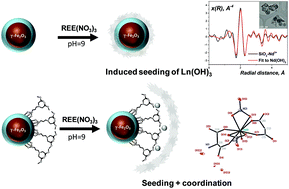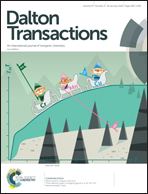Coordination of rare earth element cations on the surface of silica-derived nanoadsorbents†
Abstract
Silica (SiO2)-derived nanoadsorbents are a powerful and attractive tool for the extraction and separation of rare earth elements (REE) from many perspectives such as reusability, efficiency and minimum impact on the environment. In the present work, we investigated two different methods of adsorption down to the molecular level: (1) the mechanism of the coordination of different groups of REE (light, medium, heavy) with iminodiacetic acid (IDA) was revealed by exploiting models obtained from X-ray crystallography, explaining the selectivity of this type of ligand, and (2) the mechanism of the seeding of RE(OH)3 initiated by SiO2-based nanoadsorbents was investigated by EXAFS, both individually and in combination with mechanism (1), showing the coexistence of both mechanisms. The REE loaded nanoadsorbents possess a high magnetic susceptibility. This property was studied by magnetometry to quantify the REE adsorption efficiency and compared with the values obtained from complexometry.

- This article is part of the themed collection: Inorganic chemistry approaches to saving critical elements: Recovery, Reuse and Recycling


 Please wait while we load your content...
Please wait while we load your content...